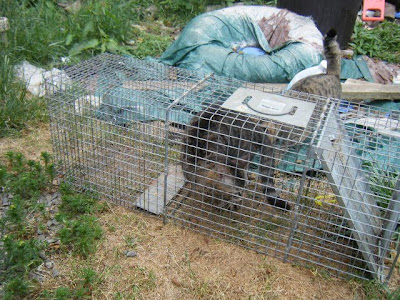

The cats can live out their lives in their outdoor home, but won't be adding to the community cat population.

After a ~24-hour recovery period, the cats are returned to the exact location where they were initially trapped, and released there. In more detail: colony caregivers and volunteers humanely trap community cats and bring them to a veterinary clinic, where they are spayed or neutered, vaccinated against rabies and distemper, eartipped, and given a basic checkup. In a nutshell: the most effective and humane approach to community cats. For more information on our cat intake guidelines and policies, visit: What is Trap, Neuter, Return (TNR)? (Feral cats should not be brought to any shelter or rescue.) We instead offer resources to help community members participate in our Trap, Neuter, Return (TNR) program, which is the most humane and effective approach to managing community cat populations.

For truly feral cats who are brought to shelters, the only outcome is euthanasia, which is why we do not accept community cats to our shelter. Community cats are often fearful and avoidant of humans, and are not likely to ever be socialized enough to become a lap cat or to even be happy living indoors. If you see a sick or injured cat outdoors, contact the animal protection police at 70.Ĭommunity cats are often feral (not socialized to humans) and are not suited to life around humans as an indoor pet cat. If a cat is sick or injured, or declawed or microchipped, the shelter will accept him/her. If the shelter took in healthy free-roaming community cats, many cats would be at risk of euthanasia for lack of space or because they are not suited to life as an indoor pet cat. Additionally, some free-roaming community cats don't have one specific home they return to, but are rather cared for and part of a colony. The rate of return-to-owner for stray cats is only around 20%, and owned pet cats are 13 times more likely to find their way home on their own versus being brought to a shelter. The shelter does not accept healthy free-roaming community (aka feral or stray) cats, and there are no laws against free-roaming cats in Fairfax County. For all free-roaming community cats, their home is the outdoors, within the community.Ĭan I bring community cats to an animal shelter? Some community cats have a caregiver who watches out for them, but others may survive and thrive without direct human intervention. These cats can be friendly towards humans, or they can be feral (unsocialized and avoidant of humans), or they may fall somewhere on the spectrum between friendly and feral. Community cats are cats who live outdoors with no one specific owner.


 0 kommentar(er)
0 kommentar(er)
